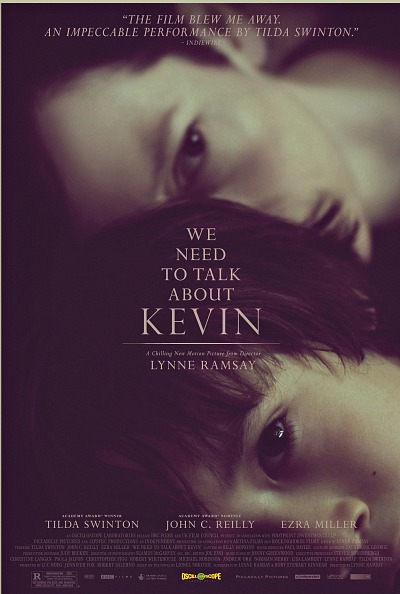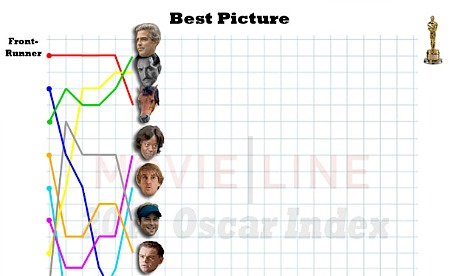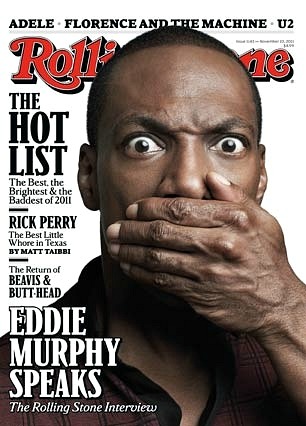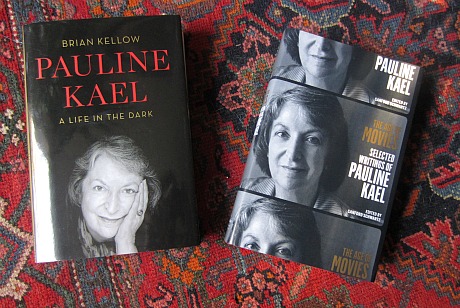Today has been one of the slowest, most agonizing filing days in memory. With every post I’ve felt as if my arms and hands were covered in molasses and maple syrup on a cold day in February…physically and mentally drowned in the stuff, and with both of my computers (iMac and Macbook Pro) running slow and lumpy and requiring re-starts etc. I really give up. Two screenings to get to now. Back at it after 10 pm. Awful.
Safe Inside
In a non-video jailhouse interview Bernard Madoff has told GMA’s Barbara Walters that he suffers nightmares and “terrible remorse” for having “ruined his family” but is “happier in prison” than he was on the outside.

“I feel safer here,” said Madoff. “I have people to talk to, no decisions to make. I know I will die in prison. I lived the last 20 years of my life in fear. Now I have no fear because I’m no longer in control.”
Walters explained that “the other prisoners treat him with great respect, especially the young ones, but they do this for all the wrong reasons. But he has a routine, and for the first time in his life he’s not afraid of being arrested.”
Q; What’s the difference between the existence that Madoff has now and the one that Ringo Starr describes in “Octopus’s Garden“? A: Madoff’s is on dry land.
And I dreamed I was dying
And I dreamed that my soul rose unexpectedly
And looking back down at me
Smiled reassunngly
And I dreamed I was flying
And high up above my eyes could clearly see
The Statue of Liberty
Sailing away to sea
And I dreamed I was flying.
Here’s a thing I wrote in March 2009 about what Madoff could have done before he was pinched.
Nosferatu Eyes
It’s intriguing that the designer of Oscilloscope’s We Need To Talk About Kevin poster chose to show Jasper Newell, who has very little screen time as the very young Kevin, rather than the utterly demonic-looking Ezra Miller, who has the much larger role of the teenaged Kevin.

From my 5.12.11 Cannes Film Festival review: “As far as Ramsay’s film is concerned Kevin is just a steely-brained, black-eyed Beelzebub who’s been brought to life in order to pour acid into people’s lives. His ultimate acts of destruction happen at the very end, but they’re pretty much anti-climactic given the certainty in the audience’s mind that the only humane and compassionate response to this kid early on would have been to put him in a burlap bag, fill it with rocks and toss it off a pier.”
Full Day
Putzing around online, writing long letters, tending to this and detail about tomorrow’s trip to the Savannah Film Festival. It’s already past 11 am and six or seven stories to file. Where is Yvonne Medrano hiding out and why hasn’t my British West Side Story Bluray arrived yet? Two screenings to attend later today — the very first Hollywood Elsewhere-funded screening of Tyrannosaur at Aidikoff Screening Room at 3:30 pm and then My Week With Marilyn at 7 pm.
“War Horse, We Have A Problem”
The above six-word statement is not one of my wish-upon-a-star fantasies. It’s a direct headline quote from the latest Movieline “Oscar Index” chart, presumably written by Stu Van Airsdale. I’m finally not the only guy standing against the headwind of sight-unseen War Horse praisings. If War Horse surges after it screens, fine. If it wins Best Picture, fine. But at least handicappers have stopped sipping the preliminary Kool-Aid, which is due in part to the sudden surge of Alexander Payne‘s The Descendants.

Transformer
Carey Mulligan‘s sleek frosty-blonde look, seen at Monday night’s Hollywood Awards, is basically a Baz Luhrman creation as she’s currently playing Daisy Buchanan in Baz’s 3D version of The Great Gatsby. But she’s been looking fairly glammy for a while now, and I was struck this morning by the contrast between these two photos. The left-side shot was snapped by yours truly at Park City’s Egyptian Theatre in January 2009 just after the first screening of An Education; the other was taken the night before last.


Share your impressions by all means, but it seems as if the slightly overwhelmed, vaguely anxious 23 year-old I spoke to in Park City some 32 months ago is…well, we all grow up and become wise to the world, don’t we? It’s just that that this inevitable process has happened very quickly to Mulligan. I’m supposed to do a phoner with her tomorrow or the day after about her crazy-sister role in Shame and other current matters.
Felt So Mellow He Had To Leave
Tower Heist star Eddie Murphy has told an anonymous Rolling Stone writer that he didn’t angrily storm out of the 2007 Oscars after losing the Best Supporting Actor trophy to Alan Arkin. A Huffington Post account of the RS interview claims Murphy is saying that it’s “not so” that he left the Oscars. But it sounds to me like Murphy isn’t denying that he walked out — he’s saying he didn’t leave in a pissed-off mood.

If Murphy is claiming he didn’t actually leave the show then his driver, Karlo Ateinza , doesn’t share this recollection. Just after the 2007 Oscars L.A. Times columnist Joel Stein reported that he spent Oscar night hanging at the Hollywood Bowl parking lot with Ateinza and other top celebrity limo drivers, and that at 6:52 pm Karlo’s cellphone rang and he said the following after hanging up: “I have to go right now…I have to pick him up.”
Here‘s what Murphy has told Rolling Stone:
“Alan Arkin‘s performance in Little Miss Sunshine is Oscar-worthy, it’s a great performance. That’s just the way the shit went. He’s been gigging for years and years, the guy’s in his seventies. I totally understood and was totally cool. I wasn’t like, ‘What the fuck?’ Afterward, people were like, ‘He’s upset,’ and I’m like, ‘I wasn’t upset!’
“What happened was after I lost, I’m just chilling, and I was sitting next to Beyonce’s pops, and he leans over and grabs me and is like, [solemn voice] ‘There will be other times.’ And then you feel Spielberg on your shoulder going, ‘It’s all right, man.’ Then Clint Eastwood walks by: ‘Hey, guy… ‘ So I was like, ‘It’s not going to be this night!’ [Mimes getting up] I didn’t have sour grapes at all. That’s another reason I wanted to host the show…to show them that I’m down with it.”
So Murphy left the show early in a really positive mood, feeling great about Arkin’s triumph and just, you know, exuding alpha vibes about everything. Whoo-hoo, this is cool, good for Alan…I’m outta here!
The link to Stein’s story has disappeared off the L.A. Times website, but here’s how the story went:
“A perfect confirmation about Eddie Murphy having left the Kodak auditorium after he didn’t win the Best Supporting Actor Oscar has arrived by way of L.A. Times columnist Joel Stein, who spent last Sunday night hanging at the Hollywood Bowl parking lot with all the top celebrity limo drivers, one of them being Murphy’s driver, Karlo Ateinza, who’s been hauling Murphy around for the last seven years.
“Karlo wasn’t having a great night because Murphy lost early,” writes Stein. “I”m really sad. I feel sorry. He should have won it,’ Karlo said. ‘But Alan Arkin is good.’
“Karlo, who drives Murphy only when he isn’t needed by Keanu Reeves, Sandra Bullock or Colin Farrell (Reeves and Bullock both needed him last year, so they rode together), said he figured he’d be home by midnight. ‘He’s not a party animal,’ Karlo said. ‘Last night, he went to two parties, stayed for 45 minutes and went back home.’ After the Golden Globes, Murphy went straight home. Even though he won.
“Though he was worried about Murphy’s mood, Karlo tried to convince himself that the boss wouldn’t be ornery. ‘When he got the Golden Globe, he just put it in the car and he was the same Eddie Murphy. So maybe he won’t care.’
“Right then, at 6:52 p.m., long before Jennifer Hudson would win her Oscar, Karlo’s cellphone rang. ‘I have to go right now,’ he said. ‘I have to pick him up.'”
Here’s another story about the event.
Corporate Timidity, Wimpitude
Warner Bros. and the producers of the currently-filming The Dark Knight Rises have all earned major pussy points for deciding against filming a scene that would have used the Occupy Wall Street encampment in Manhattan’s Zuccotti Park as a backdrop. Because of this one presumably brief scene TDKR would have been more than just another corporate-money-grab-on-the-back-of-a-comic-book-franchise, but now it’s back to square one.
If director Chris Nolan was more of a man, he would have stood up to his producers and said “no, no…this is important…we have to shoot there.”
A Dark Knight Rises insider has told me that a Zuccotti Park shot was being planned for next week, but
Entertainment Weekly’s Aly Semigran reports as follows: “While Christopher Nolan will begin filming portions of The Dark Knight Rises in New York City over the span of the next two weeks, a Warner Bros., rep tells EW that there are no plans to shoot in Zuccotti Park, the home base for the OWS movement.
“After an open casting call for NYC extras for the project hit the web, rumors swirled that the project could be filming very close to, if not directly in, Zuccotti Park. Last week an anonymous source told the LA Times, ‘Cast members have been told the shoot could include scenes shot at the Occupy Wall Street protests’ and that Nolan could be using ‘the protests as a backdrop or a stand-in for something that already exists in the film,’ but that simply doesn’t seem to be the case.”
Oakland Tianenmen
I can’t help being impressed by the visual qualities in this video from last night’s tear-gas police attack on Oakland Occupy-ers. It’s all “natural,” so to speak, and it looks like something lighted by Vittorio Storaro in Apocalypse Now. Politically and historically speaking, whatever happened to the basic First Amendment right to peaceably assemble?
Drive Sounder
Six days ago…six days ago!…this brief interview with Drive sound designer Lon Bender appeared. It takes him two minutes to arrive at the subject, but some people need to meander around a while before getting down to business, and that’s okay. I guess.
Sony Classics Swag
In recognition of the ongoing celebration of the 20th anniversary of Sony Pictures Classics as well as the generosity of the current principals, an earnest thank you from Hollywood Elsewhere. I’ll use it this weekend for my trip to the Savannah Film Festival.



